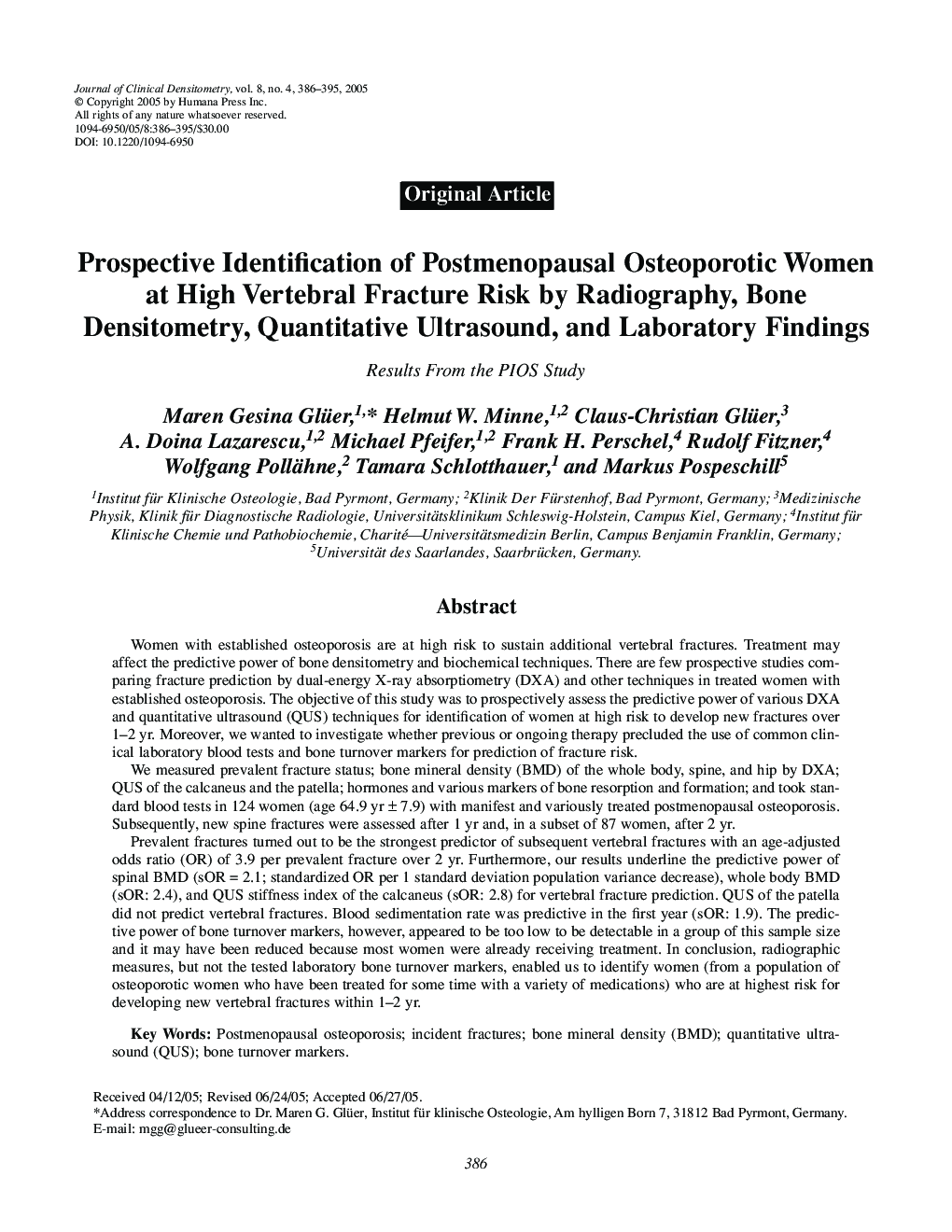| Article ID | Journal | Published Year | Pages | File Type |
|---|---|---|---|---|
| 9239578 | Journal of Clinical Densitometry | 2005 | 10 Pages |
Abstract
Prevalent fractures turned out to be the strongest predictor of subsequent vertebral fractures with an age-adjusted odds ratio (OR) of 3.9 per prevalent fracture over 2 yr. Furthermore, our results underline the predictive power of spinal BMD (sOR = 2.1; standardized OR per 1 standard deviation population variance decrease), whole body BMD (sOR: 2.4), and QUS stiffness index of the calcaneus (sOR: 2.8) for vertebral fracture prediction. QUS of the patella did not predict vertebral fractures. Blood sedimentation rate was predictive in the first year (sOR: 1.9). The predictive power of bone turnover markers, however, appeared to be too low to be detectable in a group of this sample size and it may have been reduced because most women were already receiving treatment. In conclusion, radiographic measures, but not the tested laboratory bone turnover markers, enabled us to identify women (from a population of osteoporotic women who have been treated for some time with a variety of medications) who are at highest risk for developing new vertebral fractures within 1-2 yr.
Keywords
Related Topics
Health Sciences
Medicine and Dentistry
Endocrinology, Diabetes and Metabolism
Authors
Maren Gesina Gl¨er, Helmut W. Minne, Claus-Christian Gl¨er, A. Doina Lazarescu, Michael Pfeifer, Frank H. Perschel, Rudolf Fitzner, Wolfgang Pollähne, Tamara Schlotthauer, Markus Pospeschill,
